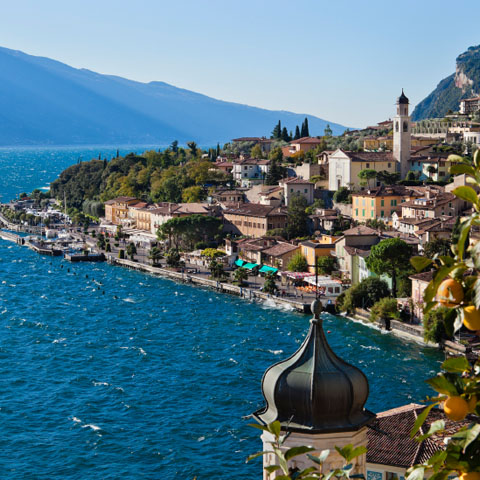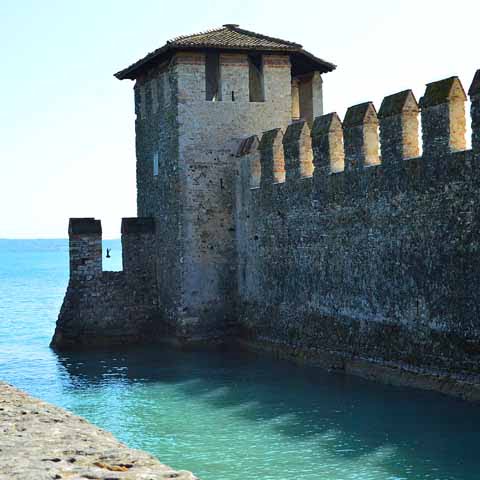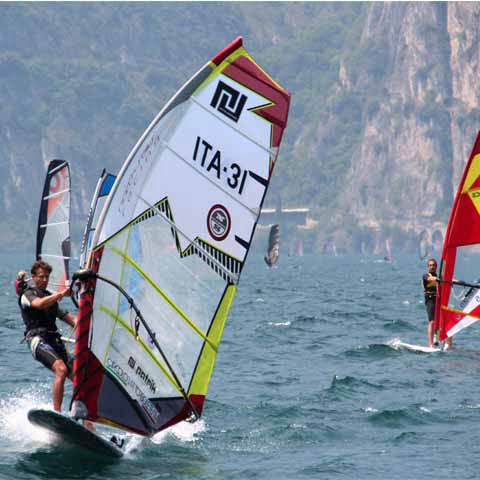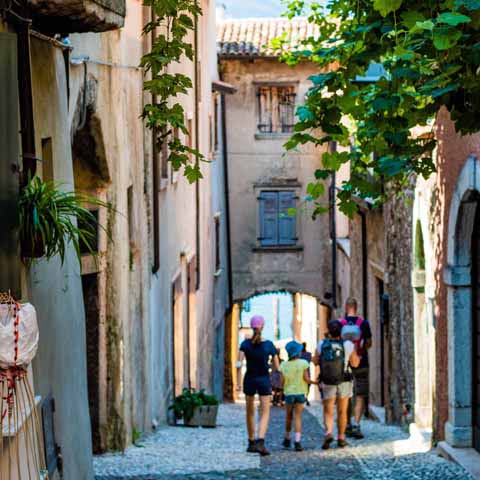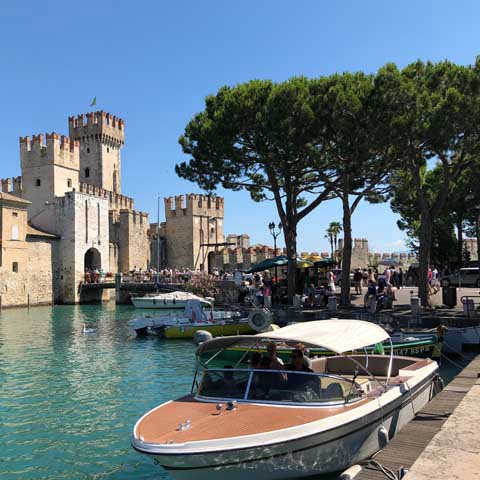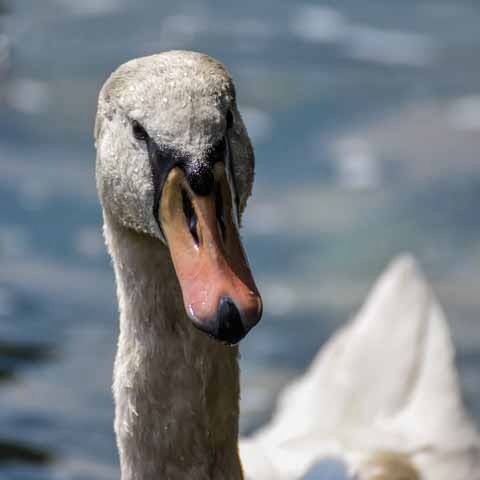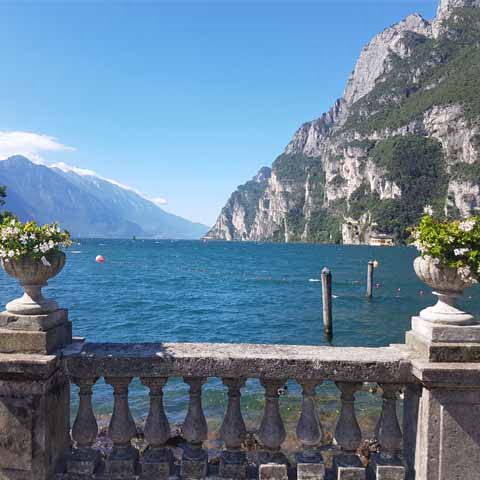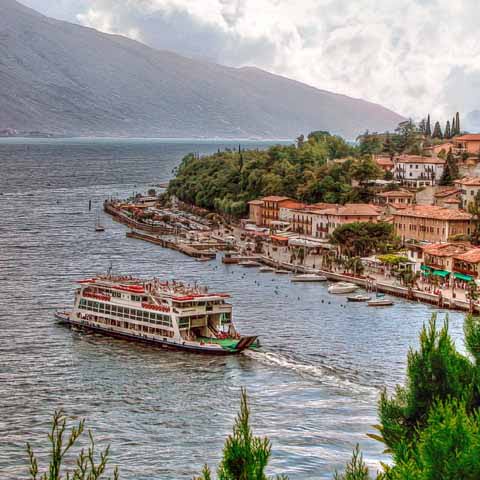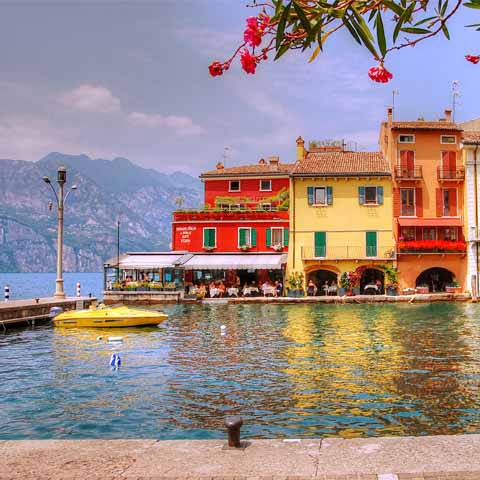Italy has long been a favorite vacation destination known for its ancient history, rich culture, natural beauty, and handmade cuisine. Although there are a number of fabulous cities both large and small to visit on your trip to Italy, perhaps no area is quite as breathtaking as the simply stunning Lake Garda.
Located in Northern Italy within just a few miles of the city of Verona, it is the largest lake in Italy. Home to roughly one hundred miles of impressive shore line, the lake itself is an estimated thirty miles long, ten miles wide, and more than one thousand feet deep. The clear blue waters of the lake can be mesmerizing and are only outdone by the majestic Italian Alps that rise around it.
Lake Garda has been a popular Italian vacation destination for years, and with good reason. The approximately one hundred miles of shoreline are dotted with exclusive and picturesque lodging options, open-air piazze, quaint cafés, and charming restaurants.
Some cities along the lake have a more gradual rise into the mountains and are easily navigable for most whether they are strolling through the city center, sipping a drink in the piazza, or soaking up the sun lakeside. Cities with a more immediate rise into the mountains offer various uphill adventures such as steep cobblestone roads or cable car rides to the top of a mountain.
Lake Garda is thought to be the product of glaciers that once dominated the region. Today, the lake is quite long and narrows the further north it stretches. The ecosystem of the lake is rich with natural wonders. When it comes to agriculture, the area is widely known for the groves of olive trees and citrus trees, particularly lemons. The lake itself is home to a number of fish including the rare Carpione del Garda, which is now considered to be endangered.
Some of the more popular lakeside destinations in this area include Limone sul Garda, Malcesine, Salò, Sirmione, and Riva del Garda. Each of these towns are regarded as amazing vacation destinations and receive a fair amount of tourist foot traffic each year. Towns such as Riva Del Garda are a favorite for those that enjoy historic sites, but also value a calm and relaxing pace in the presence of the lake’s tranquil natural beauty.
When traveling from long distances, many visitors choose to fly into nearby airports such as the Verona, Milan, or Venice airports. Once in Italy, it is possible to reach the Lake Garda area by car or by train. Various rail options such as those lines that operate between certain towns in Lake Garda and Verona or Milan, are also an excellent option if you are already close to the lake.
Because of Lake Garda’s miles of shoreline, tourists who visit the region seldom stay in one place for too long. Whether it is taking a boat tour, a ferry, the rail, a bus, or even a cable car, there are a number of different ways to take in the area and all offer a different perspective of the beauty of the lake and the surrounding communities.
The lake’s history can be traced back to at least the eighth century, and it is thought to have been named after a town whose name meant “place of observation” or “place of guard.” With the area’s natural splendor, it is no surprise that its ownership was highly contested at times. Over the years, Lake Garda saw its share of action on the water including Roman battles, Austrian naval battles, and a role in World War II when the town of Salò became the capital of Benito Mussolini’s Italian Social Republic and a headquarters for military operations.
GEOGRAPHY
This pristine lake is Italy’s largest and it sits at the edge of the Italian Alps. Throughout much of the lake’s northern coastline, mountains can be seen rising up sharply just off the shore.
Lake Garda is conveniently located only miles from Verona and is often regarded as a halfway point between the larger Italian cities of Venice and Milan. Many of the towns and cities located on the northern half of the lake were at one time part of Austria.
In addition to life along the shoreline, the lake also features several islands including the largest, which is Isola del Garda, as well as Isola dell’Olivo, Isola San Biagio (sometimes referred to as Isola dei Conigli), Isola di Trimelone, and Isola di Sogno.
The Sarca River is the main tributary of Lake Garda, but the lake is fed by an estimated twenty-five other tributaries including the Ponale River and the Varone or Magnone River.
CLIMATE
Both the spring and fall months generally experience a range of temperatures with highs averaging just over or under the 50s (in degrees Fahrenheit) and lows in the 30s. Depending on the day, these seasons can be excellent for those who enjoy hiking and exploring their natural surroundings.
Winter is generally a bit cooler with temperatures only rising to an average high of the mid-40s and the lows generally bottoming out around the high-20s or low-30s. January tends to be the coldest month for Lake Garda. The area is quite popular amongst winter sports enthusiasts thanks to the nearby Dolomites.
The warmer summer months can be a fantastic opportunity for summer sport enthusiasts to take advantage of the lake winds to enjoy activities such as sailing. During this season, the lake water typically stays at a temperature in the 70-degree range and those onshore can expect high temperatures that hover around the high-70s or low-80s. July is generally one of the warmest months of the year for Lake Garda.
Depending on your location on the lake, winds may be present. The length of the lake and the various altitudes that it is a part of make the wind a varying factor for different areas. That said, it is not unusual to have a light wind or more whipping through your hair on a trip to Italy’s Lake Garda.
ONLY IN LAKE GARDA
Whereas some areas of Italy can be more touristy than others, Lake Garda is a perfect blend of sightseeing and nature. The area is quite breathtaking at a glance with the often-snowcapped mountains rising above the rippling blue waters of the lake. However, sports and adventure enthusiasts can find hidden beauty of the land when venturing out for unique sporting activities.
Lake Garda is a perfect destination for a group or people of opposite interests. Those that wish to sightsee and soak up the local culture can visit lakeside towns while adventurers conquer the great outdoors with activities such as windsurfing, kitesurfing, sailing, paragliding, biking, climbing, trekking, Nordic walking, and skiing, to name just a few. Among the most characteristic towns are Sirmione with its Grotte di Catullo and Scagliero Castle, Gardone Riviera with Il Vittoriale, the Apponale Tower in Riva del Garda, and the medieval village of Arco with its castle.
Those travelers who wish to take advantage of sunny days can find plenty of opportunities for relaxation at Lake Garda’s numerous beaches. The majority are pebble beaches, though there are a few sandy beaches as well. After sightseeing in other parts of Italy, Lake Garda is one of the best places to unwind and soak up the tranquil atmosphere of this scenic area.
Escape to the gorgeous natural wonders of Lake Garda where you can find adventure, relaxation, and a soul soothing peace all wrapped into one of the most stunning vacation destinations in Italy.Travel Guides
The Veneto Region of Italy
The Cities of Veneto, Italy
